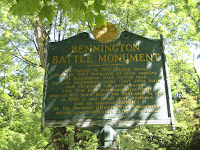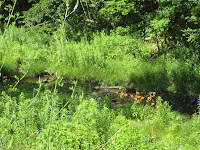.JPG)
.JPG)

.JPG)

.JPG)


.JPG)
.JPG)

.JPG)

.JPG)
.JPG)
.JPG)
.JPG)
.JPG)
.JPG)

.JPG)
.JPG)
.JPG)


.JPG)
.JPG)
.JPG)


.JPG)

.JPG)
.JPG)
.JPG)


.JPG)

.JPG)


.JPG)
.JPG)






.JPG)
.JPG)
.JPG)
.JPG)



.JPG)
.JPG)


.JPG)
.JPG)

.JPG)
.JPG)



.JPG)
.JPG)
.JPG)
.JPG)



.JPG)




.JPG)

.JPG)
.JPG)
.JPG)
.JPG)
.JPG)

.JPG)
.JPG)
.JPG)
.JPG)
.JPG)
.JPG)

.JPG)

.JPG)
.JPG)
.JPG)
.JPG)
.JPG)


.JPG)
.JPG)
.JPG)



.JPG)
.JPG)

.JPG)




.JPG)
.JPG)

Saturday we stayed around the coach for the moring in anticipation of the St. James Episcopal Church BBQ in Arlington this afternoon. About 1:00 we drove down to the village, parked the car and walked over to the church. Well not quite what we expected. A small tent with one small cooker and they were charging $12.00 for one BBQ sandwich some potatoes and corn. Well needless to say off we walked and left. We spent the rest of the day in the coach getting ready for Sunday in Bennington sightseeing.
Sunday we left early for Bennington for some sightseeing and to do a couple of caches. Our first stop was the Old First Church and the cemetery behind the church which was the burial place of poet Robert Frost. We saw the grave site and then went and found the cache that brought us here. After that we went into the church and it was beautiful, very plain and simple but lovely. The Old First Church was "gathered" on December 3, 1762, the first Protestant congregation in the New Hampshire Grants. The organizers were "Separatists," influenced by the Great Awakening, from Connecticut and Western Massachusetts, and were proprietors of the new town of Bennington. The first meetinghouse was a plain pine structure built in the center of the village, the green in front of the present structure, and served for general public meetings, as a school, and for worship. The present sanctuary, completed in 1805, is the first church built in Vermont that reflects the separation of church and state. That is, the state would have no role in the maintenance of the church's building or ministry; and the church would be free to support and direct its own work. The townspeople hired the noted church architect, Lavius Fillmore, as builder. He was a nephew of an early church member here and cousin of the nation's 13th President. Fillmore had built other churches in Connecticut (e.g., East Haddam Congregational Church, 1791) and later in Middlebury, Vermont. The columns are hand-planed from the whole trunk of pine trees and extend from the basement footers to the rafters. Notice in the ceiling the cross embracing the world. The exterior corner decorations are wood blocks, meant to resemble the stone of European churches. The cost of the building was $7,793.20, raised almost completely from the sale of the first floor pews. The upper pews were called the Free Gallery, and provided seating for visitors and young people. The box pews and the high pulpit were restored in 1937. The pew and wall plaques honor Vermonters who contributed significantly to society (not necessarily church members), including Robert Frost who spoke at the rededication (and whose gravesite is just down the hill). In 1994-99, the congregation undertook major building renovations, from the basement beams to the bell tower, from the marble steps to the roof; and the interior was plastered, and painted in the present historical white and grey.
We left there and saw several other sites like the site of the Catamount Tavern marked now by a granite and copper statue placed there in 1896, The Catamount Tavern, owned by Stephen Fay was built in 1769 and burned in 1871. During the tavern's 102 years of existence it housed many important events. The name Catamount Tavern came about when Grantees from New Hampshire posted a stuffed catamount on the tavern's signpost to repel the New Yorkers who claimed their land. The Catamount served as headquarters for the Green Mountain Boys while making their plans against the Yorkers and the British. Ethan Allen planned the capture of Fort Ticonderoga here and John Stark planned British General Burgoynes defeat here which turned out to be successful in the famous Battle of Bennington.
The Old Academy which was built in 1821 and was meant to be the finest building in the state. This building served first as a private school and then a public school, it later became Old Bennington's Public Library. The tablet next to the Academy marks the site of the cabin built by the first settler, Samuel Robinson who built his cabin here in 1761.
The Village Lion Fountain which was a commission for restoring a public fountain in the Village of Old Bennington, Vermont. The fountain originally was a trough to water horses, later converted to refreshment for pedestrians.
The Walloomsac Inn which was built in 1764 and is the oldest Inn in the state of Vermont. The Walloomsac was originally owned and operated by five different families. The Deweys, Albros, Hicks, Robinsons, and the Sanford's owned the Inn until 1891 when Walter Berry bought it and added the large side wing along the road. The separate rear section housed the help and the laundry. There are also barns in the rear for livestock and horses. Many famous people have stayed in the Walloomsac throughout the years including President Rutherford B. Hayes and President Benjamin Harrison.
Next we were off to the Bennington Monument and a cache there and a benchmark we wanted to see. Built in the late 1880's, this monument is a dedication to the famous Battle of Bennington that took place during the Revolutionary war in 1777. It was at this location the American colonists maintained a store of weapons and food, which British General Burgoyne knew was critical to capture in order to restock his own troops. Although the battle came together in nearby Walloomsac, this site seemed appropriate considering the military and strategic importance of the arsenal Burgoyne was trying to capture. For almost a century the battle was celebrated annually in the Old State Arms House Hotel which was also located on this sight. In 1877 a local historical society was formed and they started planning the monument. The committee considered many designs for the monument. One design which called for a slender stone column only 100 ft tall was showcased during the centennial celebration in 1877, which was attended by President Rutherford B. Hayes. The committee finally accepted J. Phillip Rinn's "Big Tower" design with some changes. J. Phillip Rinn modified the original design to include curved edges, and in November 1889 the final stone was set on. The dedication ceremonies were delayed until 1891, when Bennington welcomed President Benjamin Harrison who attended the ceremonies and held a reception at the Walloomsac Inn. We walked around the base of the monument looking at the statues and then took the elevator up to the 200' level to see the view. It was lovely as you can see by the pictures. You can see VT, MA and NY from the 200' level.
After we were back at the base we were done caching and we started another a short driving tour of Bennington. Our first stop was St. Francis DeSales Church This new building for the Saint Francis De Sales church was built in the 1890's. The church originally had a high steeple extending from the top of the bell tower that acted as a landmark for Bennington. This steeple was removed in the 1920's because it swayed alarmingly in the wind. The original Saint Francis De Sales church built in 1855 is now the church gallery section of the Bennington Museum.
The Putnam House was built in 1873 by Henry W. Putnam. It contained offices of railway companies and was a gentlemen's club. In 1889, during Prohibition the Putnam house was closed after a police raid found illegal alcohol. The Hotel has been used for many different purposes throughout the years, including dorm rooms for Southern Vermont College students.
The Southshire courthouse was built in 1936 as a replica of the original Southshire courthouse in Old Bennington that burned in 1869.
The Old Blacksmith Shop which was built in 1833 as a Blacksmith's shop this building has been a Girls club quarters, The Chamber of Commerce and the Bennington Police station until recently when the Police moved across the street in to the building which prior to that been used for the Federal building.
Some of the other stops we made were the Bennington Police Dept., Old Stone Mill, Earl's Service Station, Bennington's Potters Yard, Bennington Museum, Grandma Moses Schoolhouse, Four Chimneys Inn, Rattlesnake Cafe, Blue Benn Diner and the Henry Bradford Mill. We drove around the downtown area and saw 5 or 6 more of the Moose that were decorated for Moosefest. We stopped at a small cafe and had coffee and a goodie then headed back to the coach for the rest of the day.
Monday we headed out to do some caching which took us back to Hoosick Falls and Hoosick. We started off with a cache in a small cemetery for Walter A. Wood, the man that built Hoosick Falls and next was a cache along the Hoosick River. Our third cache was a puzzle cache where the first stage was at a 1842 school house where we had to figure out the coords for the final stage. Fourth was a virtual cache along the main road at a spot where Mike Kane a man was shot in 1930 while he was sitting in his taxi cab. Next were 2 caches located in small cemeteries and our last cache was next to a welcome to VT sign. Then it was back to the coach for the rest of the day.
Well time to say adieu and until next time we love and miss you all. Mom & Dad

No comments:
Post a Comment